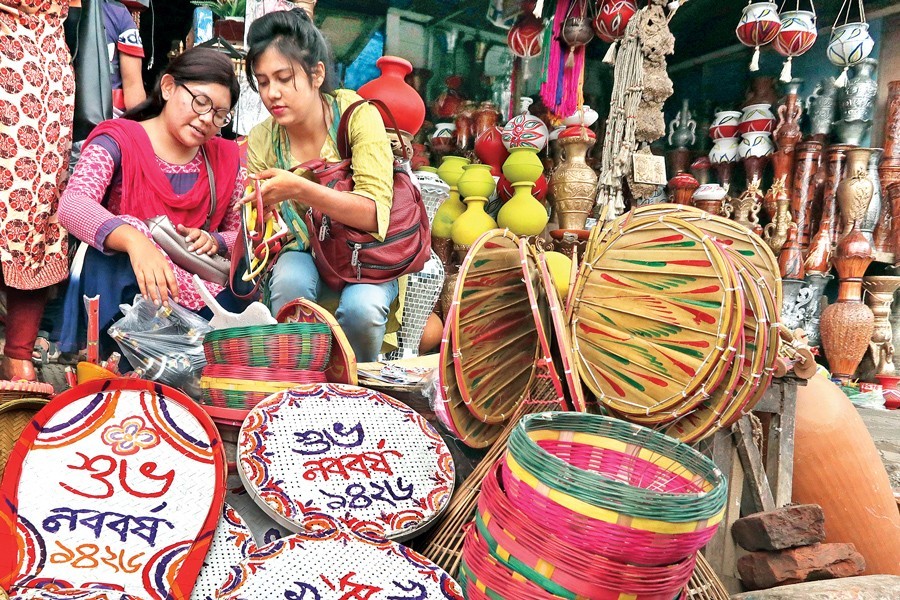Going by the Export Promotion Bureau (EPB)'s data, the export of handicraft has demonstrated a steady growth over the years. Actually, foreign currency earnings from the sector have about doubled over the past half a decade. In the last six months between July and December of this fiscal (2020-21) export has registered a robust performance, earning US$16.58 million. This is a growth of close to 49 per cent if compared to the earnings over the same period in the last fiscal year. Quantity-wise, however, the said export earnings may not look so impressive. But what cannot be made light of is the fact that unlike many other industrial sectors, the handicraft has performed vigorously despite the pandemic. Moreover, though the strategic performance target for the period was set at around 13.50 per cent, the actual performance has been 23.36 per cent.
Undeniably, this is a welcome development at a time when the clamour for diversifying the country's export basket has reached a crescendo. True, past records with the EPB also testify to this assessment about handicraft sector. As for instance, in FY 2015-16, the country's export earnings from handicraft goods were around US$ 10 million. But during the FY (20118-19), it was nearly US$ 20 million, whereas in FY 2018-20 it was over 20.50 million. So, what is especially noteworthy about the current fiscal's growth pattern? First, though handicrafts are regarded as non-essential goods, still recently their demand in the international market has been on the rise. Second, far from diminishing, it has further increased during the pandemic, a time when business in general has suffered, let alone exports. So, it appears that the handicrafts sector has somehow escaped the overall depression affecting the economy. Industry insiders, however, hold that the pandemic has created a new awareness among the global consumers about environment-friendly products. And, being made by hand using indigenous raw materials found in nature, its appeal is greater than artificial commodities. Furthermore, it is not a passing whim that overseas consumers are buying handicraft items. The signs are strong that consumers are nowadays preferring green products more than ever before. The jute-related products, for example, including other Bangladeshi handicrafts are learnt to have been gaining popularity in the international market in recent times. Also, addition of new products to the export basket like the soil-based terracotta and handmade carpet, or satranji, of the Rampur area have definitely played their part in increasing the popularity of our handicraft goods abroad.
The external demands apart, one needs also to consider the local factors contributing positively to the sector. Mention may be made here of the factors like low production cost, loan accessibility at a single digit rate, exploration of untapped markets and availability of raw materials. On this score, the Small and Medium Enterprises Foundation (SMEF) of the government deserves commendation for the way it has been promoting new entrepreneurs in this sector with its easy credit support.
Notably, the major players including China, Vietnam and Thailand in the international handicrafts market have, of late, been switching to high-tech products. To add to that, the global handicrafts market, too, has been growing fast in recent years. Clearly, the overseas handicraft market looks highly promising. The policymakers of this sector should formulate a befitting strategy to make the most of this development.


